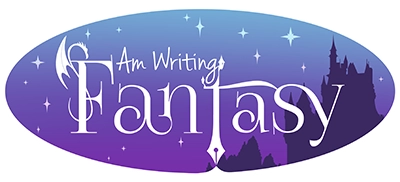Writing relies heavily on telling the reader descriptions: clothing, appearances, landscapes, cities, movements, clues for time of day, and such. But there is so much more to the world of your story than this!
Plus, it is telling and isn’t this supposed to be “show don’t tell?”
A good story pulls the reader into the world by sharing the experiences of the characters. The best description is what the main characters sees. But real experience is beyond sight!
This writing tip series is dedicated to deepening the setting of your story by utilizing senses other than sight. Because we rely on it far too much as writers! Bring your character and world to life for readers with immersive descriptions.
In part 1, we looked at smell and how it can enhance the worldbuilding, character and creature descriptions, and create tension. In part 2, we delved into sound. Part 3, discussed touch. Now this final post we’ll look at taste. Yes, taste!
Taste is not used much in stories. Unless you have a character who tastes with his skin, you probably won’t have someone walking around licking everything. But there are instances, probably more than you realize, when taste can add a new level to your description.
So how can you utilize taste?
What You'll Learn
World building
Isn’t one of the exciting aspects of visiting somewhere new to experience the food? Cultures have different cooking methods and spices. And these will give you a chance to mention smells and tastes elicited by banquets, walking through markets, or joining a feast.
Consider drinks such as beer, mead, wine as well as others. Is there something like coffee one character is addicted to, something that another character cannot stand the lingering acrid taste of when the first character steals his mug? Taste can add to character conflict!
While you don’t want to make the adventure about a roving feast, times when characters need to sit and discuss or are waiting miserably by a campfire and missing home will give you a chance to build a solid world built on favorite tastes one word at a time.
Characters and Creature Descriptions
Good taste is another term for refinement. It often refers to a category of attributes from dress to home decor, but the phrase grew from taste buds that could differentiate quality over slops. So another way to designate your high class characters compared to those from the gutter besides dress is the enjoyment of fine foods or the lack of notice when something is slightly spoiled. Don’t forget the ambitious character choking down a mouthful of something gritty and tasteless while determined to have more and know what that summer wine is like on her tongue.
And speaking of tongues, kissing is one occasion when the intimate detail of taste creates a very personal experience between characters and the reader. Honey, wine, beer, or garlic, a kiss can bring out a tiny detail about a moment. Is it a moment of bliss or something they might regret later?
Taste can also be another aspect of picky characters or a chef turned adventurer. You know, the one who is lighting the fire to get coals ready for dinner and obsessing over where they will eat that night? Some characters might continuously sharpen a sword while another is desperately trying to find something other than stale bread to eat. And if they happen to run into something unexpected while out mushroom hunting, all the better for your story!
What about creatures?
Vampires spring immediately to mind and a feast of salty, warm blood. Cravings for substances we find wrong as a person can draw a reader into a nightmarish mental state of any creature from dragon to werewolf. So, don’t forget about those tasty cravings your creatures harbor.
Tension
Yes, taste can impact tension. This can actually be quite fun! My favorite is when an otherwise pleasant sensation becomes something bitter expressed through taste.
“She was the one. The one you went on about in Porto Banus and again in … whatever hellhole that was after Kiev?”
Coming fully to the present, Derrick stated it more than asked. He wasn’t sure why he had never questioned who at the time, who could have won over Byran so fully, but he was certain of the answer now. Still, he glanced over to see Byran’s confirming nod. Derrick swallowed another sip of port. It hit his throat tasting of vinegar. His mind whirled.
That quote is from After the War, book 2 of Friends of my Enemy and provides a glimpse of how taste can show the reaction a character is having to news or a realization without stating to the reader that the character is overwhelmed or angry.
And this could be used vice versa too. The character that is newly in love could be eating skunk cabbage that all his companions are retching over and not even notice because he is so besotted.
Descriptions of taste sprinkled throughout your text will provide a new level of description, character traits, and clues to character’s mindset so that the reader can build a more complete picture of the story you are creating.










0 Comments